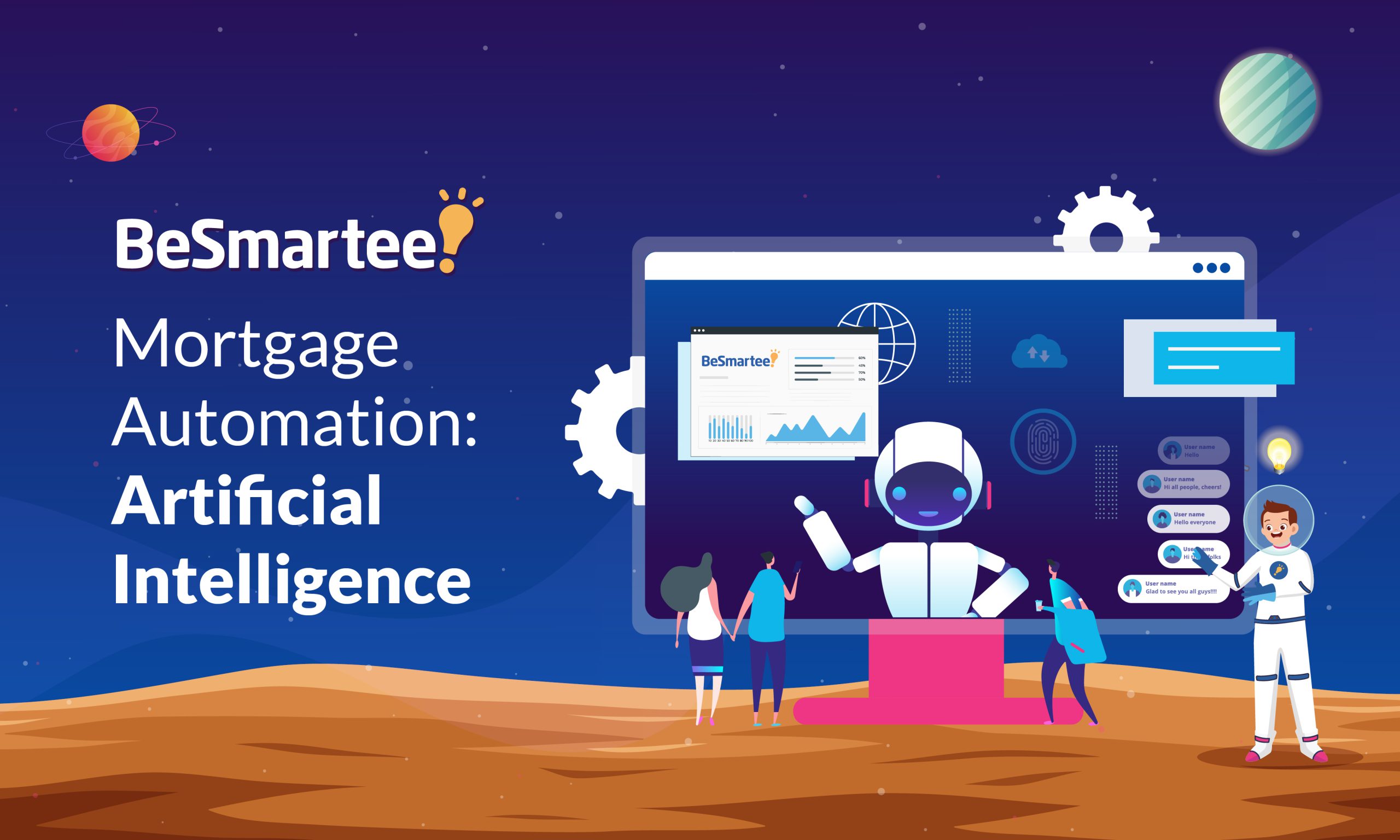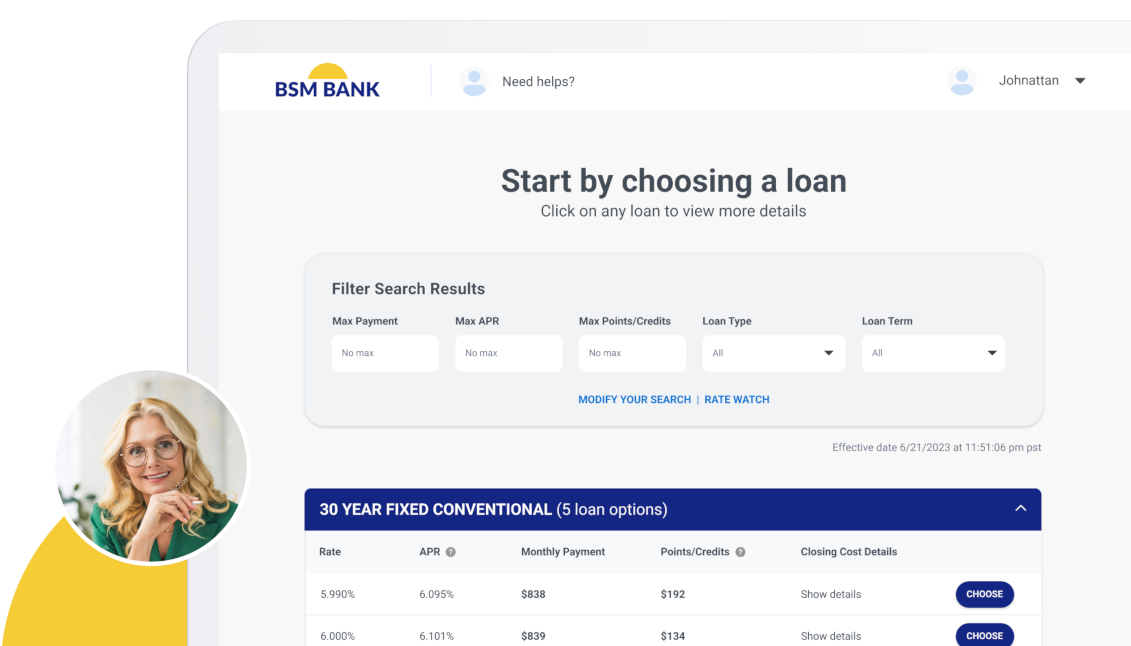Data is king in the mortgage industry. According to Forbes, we create 2.5 quintillion bytes of data each day and 90 percent of all the data in the world today was created over the last two years. Advancements in technology mean this growth rate in data will accelerate even faster. With all of this information available to lenders, the traditional loan process is becoming a thing of the past.
Artificial intelligence (AI) and big data offer consumer insights that were never thought possible. Not only that, but AI significantly improves efficiency and risk management as well as speeds up the loan production cycle.
AI is still in its infancy but let’s explore how more lenders are leveraging it to advance mortgage automation.
Loan Origination Challenges
Loan origination follows a basic process: pre-qualification, loan application, processing, underwriting, credit decision, quality control, contract and loan funding. These are basic steps but each step is highly regulated, complex and time-consuming with a considerable amount of exchanges between the back office and the front end. Lenders also deal with pressure to:
- Minimize the average sales cycle
- Increase pull-through rates
- Raise loan approval rates
- Reduce the rates of loan fallout and abandonment
- Lower acquisition costs
Each stage involves several people from multiple departments who are responsible for particular activities in the mortgage lifecycle. On top of that, the loan process involves time-consuming and repetitive tasks such as:
- Filing paperwork
- Collecting documents
- Back and forth communicating with customers
- Reviewing documents for inaccuracies or fraud
Artificial intelligence and machine learning are used alongside loan officers and underwriters to streamline and simplify the end-to-end process, while delivering an improved consumer experience.
What is Artificial Intelligence and Machine Learning?
Artificial intelligence (AI) is a poorly understood concept, often confused due to its portrayal in Hollywood movies as a super-advanced human-like robot and lack of a uniformly agreed-upon definition. Put simply, artificial intelligence automates repetitive learning through data, using the human mind as its reference. AI uses algorithms to find structures and regularities in data and adapts based on each dataset.
Machine learning, a subset of artificial intelligence, is based upon a model of brain cell interaction. Machine learning involves learning from past data or experiences without being programmed by taking massive amounts of data and making predictions.
AI and machine learning algorithms can be used as a substitute for human labor and have transformed the capabilities of businesses around the world. Humans can now automate tasks using consumer data and gain a deeper insight into this data through pattern recognition. AI has become an indispensable ally in the automation of business processes that was discussed in part one of this series.
How Artificial Intelligence is Transforming Mortgage Automation in Lending
Mortgage processing is a perfect candidate for artificial intelligence and automation due to the sheer amount of data mortgage lenders work with many sources and in many formats. For decades, mortgage lenders and other financial institutions have been investing in AI and machine learning to work alongside humans by taking over mundane tasks and reducing human error to yield a faster, more simplified lending process.
How are businesses implementing AI and machine learning into mortgage lending?
Collecting and Indexing Data
With the help of AI, Bank of America automated the mortgage loan application process to where customers fill in 10 fields on the application instead of 330. This helped increase loan originations by 6 percent in the first three quarters of 2019 and reduced the closing process to 20 days.
Paper slows down the lending process. Filling out documents, gathering the necessary paperwork to process a loan and flipping through each page to manually reference each document takes a lot of time. If a single page goes missing, this means the entire process comes to a halt and the customer’s sensitive financial information is at risk.
Using the BeSmartee Mortgage Point-of-Sale (POS), lenders can automate core origination processes to streamline operations and get to faster closings.
Making Data Accessible
Text mining applications allow lenders to search through their database of digitized documents to access customer information. Natural language processing (NLP) technology is a form of AI that analyzes human language (in this case, text within a document) to extract meaning and make decisions based on the given information.
Subscribe to BeSmartee 's Digital Mortgage Blog to receive:
- Mortgage Industry Insights
- Security & Compliance Updates
- Q&A's Featuring Mortgage & Technology Experts
Documents can also be tagged with metadata correlated to specific keywords. For example, older loan agreements within a certain time frame can be tagged with metadata for quick retrieval. Machine learning software is capable of tagging documents with metadata on its own but under certain parameters given by the company in its algorithm.
This is a nice segue into automated underwriting (AUS) for loan decisions, BeSmartee’s Mortgage POS can trigger AUS lights-out, which allows instant conditional approvals for realtors. This technology allows lenders to accurately search for information across all document types in a fraction of the time it takes manually.
Credit Decisions and Risk Management
Manual loan application processing is time-consuming and AI can be used to make quick credit decisions on loan applications. These applications don’t just look at your FICO credit score. AI can go much deeper than that.
AI and machine learning can provide credit insight to determine a customer’s risk level and their willingness and ability to pay back a loan. Algorithms look at non-numerical factors such as consumer behavior, spending habits, inconsistencies in employment and social media activity to compile information about a customer’s behavior.
All of these factors help the AI algorithm to determine a customer’s creditworthiness and identify any discrepancies. Thousands of data points and predictive models allow underwriting platforms to give more transparency and make better decisions.
Customer Experience
We’ve touched upon the importance of AI and chatbots in building customer relationships in lending. Technology has allowed mortgage lenders to implement automated customer service. AI-powered chatbots can:
- Understand natural language
- Retrieve information from multiple sources
- Understand the intent behind the user’s question to provide the most useful response
- Move a conversation to a customer support team when a problem is too complex for AI to handle
Leveraging automated customer service improves workflow, reduces manual processes for greater efficiency and lets lenders engage with more customers to stay competitive.
Fraud Detection
Common mortgage fraud scams are identity theft and income falsification. According to CoreLogic’s 2019 Mortgage Fraud Report, 1 out of every 123 mortgage applications is estimated to have indications of fraud. Lenders use tools to automate authentication that analyzes multiple datapoints – like activities, behaviors and trends in transaction anomalies – to determine fraud risks. Through identity verification and fraud detection, AI and machine learning can help reduce the risk of fraud by detecting discrepancies early in the application process.
Adaptation and Artificial Intelligence Complexities
Fannie Mae’s Q3 2018 Mortgage Lender Sentiment Survey “How Will Artificial Intelligence Shape Mortgage Lending?” surveyed 195 senior executives, representing 134 lending institutions. This survey revealed that 63 percent are familiar with AI and machine learning technology while only 27 percent have used AI tools for their mortgage business.
AI adoption in the mortgage industry is still in the early stages but it’s gaining momentum. A hurdle that most mortgage lenders need to overcome is the complexity of integrating AI and machine learning technology with existing IT infrastructures. Competition and the push to go digital might mean these lenders have no choice but to upgrade their systems and integrate AI tools into their workflow.
Another fear that lenders have is that AI algorithms can introduce bias against certain people. Most assume that machine algorithms would be free of bias since it’s primarily seen as a human characteristic. Algorithmic bias is possible, even if unintentional, by using alternative data to make credit decisions.
FDIC’s 2018 white paper regarding credit scoring using digital footprints analyzed 270,000 people who shopped at an online German furniture company and came up with some interesting results. The analysis found that borrowers using Androids were almost twice as likely to default on a loan than iPhone users. What if AI used this information as one of its decision variables? It would be ridiculous if someone was offered higher rates because they chose an Android over an iPhone but this variable, as well as many others, could result in algorithmic bias. Due to fears of bias, regulators and lawmakers are advocating for more transparency into machine learning credit models and decision making.
Final Thoughts
Artificial intelligence isn’t only about automating simple tasks. It gives mortgage lenders the chance to simplify the entire process and reduce points of friction on their end and for customers too. Our final part of our series on mortgage automation takes a look at the benefits and impact of automating mortgages. As we continue to go deeper into mortgage automation, how are you leveraging AI technology to streamline workflows and enhance the borrower experience?
Get updates from BeSmartee sent directly to your inbox! Subscribe to our newsletter here.




